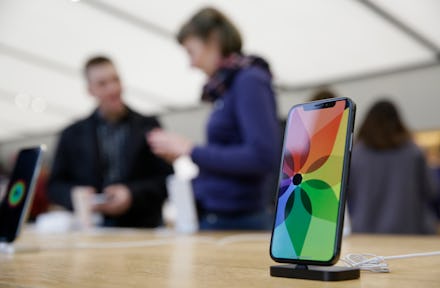For the first time, the FBI used Apple’s Face ID to get suspect’s information off an iPhone

For the first time, law enforcement has ordered a suspect to put his face in front of their iPhone to unlock the device. During a search and seizure in August, the FBI told Grant Michalski, 28, to unlock his phone using the device’s Face ID software, Forbes reported.
Michalski, who is a resident of Columbus, Ohio, was suspected of sharing and receiving child pornography. Prior to unlocking the device, the FBI acquired emails from Michalski where the suspect discussed incest and sex with minors. Michalski is one of six men charged with sharing child pornography and sexual abuse.
Investigators searched Michalski’s iPhone, looking through the suspect’s messages, photos and other content. FBI agent David Knight was able to unlock the device by telling Michalski to put his face in front of it. The feds discovered messages about abused minors as well as an earlier conversation with an undercover officer posing as a father interested in sex with children.
Forbes notes that this is the first case in the world where Apple’s Face ID was used to force a suspect to unlock their iPhone. Before facial recognition came to the iPhone, there was a big debate regarding the police being able to access users’ phones by using passcodes and fingerprints.
In 2014, we received one answer. A Virginia circuit court judge ruled that law enforcement could not force suspects to tell them their password, but they are allowed to force a suspect to use their fingerprint to unlock the device. While the Fifth Amendment prevents suspects from giving up self-incriminating information, like a password, fingerprints don’t fall under the same category. The courts likened the fingerprint scanning technology to providing a DNA sample or handing over a key to a safe, both of which are legal. In the Michalski case, It’s possible that a person’s face is closer to a fingerprint than the knowledge of a password.
However, in 2015, police obtained an iPhone belonging to one of the gunmen in San Bernardino shooting that killed 14 people. Apple refused to unlock the phone for law enforcement, worrying that an iPhone master key would leak and result in a field day for hackers. Even if the shooter’s iPhone had a fingerprint reader, Apple’s patents suggest that the finger used to unlock the device must be attached to someone who is alive.
Since the San Bernardino iPhone incident, Apple has put measures in place to prevent alternate ways to get into its phones. The iPhone’s fingerprint reader, for example, would not work in the San Bernardino case — police killed gunman Syed Rizwan Farook during the December 2015 mass shooting and Apple’s patents show the device requires a living finger. Apple’s facial recognition tech has its own security measures. Face ID’s attention aware features, which require the device to not only recognize a face but demands that face to look at the phone before unlocking, are set to on by default. The feature prevents someone from unlocking your iPhone while you’re sleeping, for example.